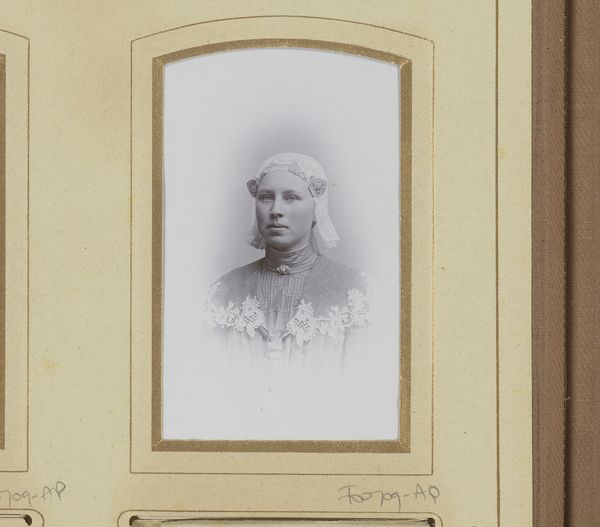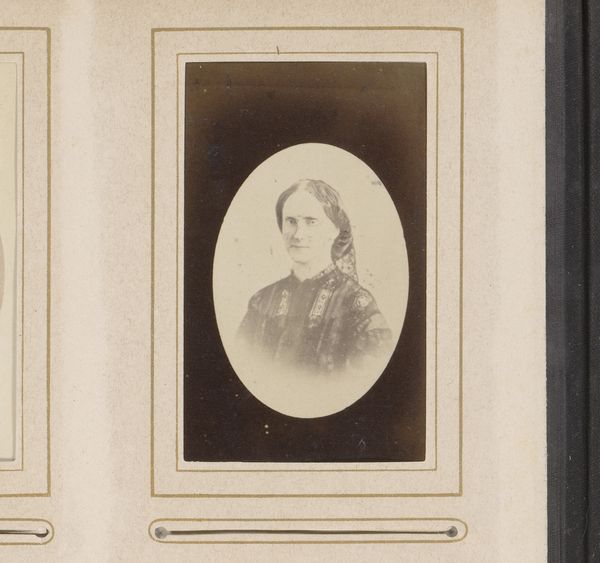
photography
#
portrait
#
photography
#
realism
Dimensions: height 83 mm, width 50 mm
Copyright: Rijks Museum: Open Domain
Curator: Here we have Willem Eduard Coenraad Dulfer's "Portret van een vrouw met muts," a photograph taken sometime between 1885 and 1895. Editor: It feels intensely intimate, almost like stumbling upon a forgotten ancestor. There's a haunting gentleness to the way the light falls. Curator: The materials are critical here, aren't they? The photographic process itself – the specific emulsion used, the printing paper – dictates the final product. It also gives insight to who could afford such luxuries. Editor: Indeed. And it reminds us that photography, back then, was as much a craft as it was an art. The sitter’s pose seems rigid, formal, but something about her eyes—or maybe it's the slight tilt of her head—suggests an unspoken story. Curator: Absolutely. The framing is intriguing, too. It's a portrait but included within a larger composition of multiple possible portraits which indicates how these pictures could've been delivered and perhaps sold in a group. It highlights the commercial aspect of portrait photography in that era. These types of mass produced items, how they affected the landscape of image making and their implications, remain interesting today. Editor: It’s like a study in controlled melancholy. Was it the intention of the artist to convey her in such a way or was this simply of result of the materials that have slowly deteriorated over time? Is our reading accurate or influenced by contemporary sensitivities? It’s amazing how the choice of such material can shift meanings over the course of its lifespan. Curator: It also speaks to the artist’s talent. To pull so much emotion from a medium still very much in its infancy in a society that might not otherwise preserve her image. Editor: This brief but illuminating glimpse into a forgotten life, captured by then innovative means, reminds us of the fleeting nature of time. Curator: It brings us back to the beginning while looking forward at what could happen to present-day techniques, in effect providing insight into a type of potential future through the study of the past.
Comments
No comments
Be the first to comment and join the conversation on the ultimate creative platform.
